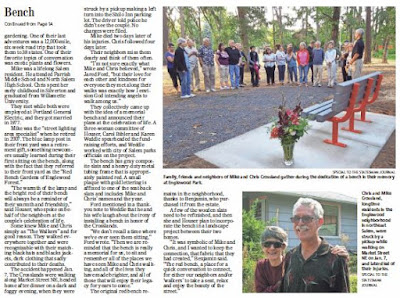A Digression
This post is a bit dull and wonky, so here's a much more interesting historical note first from City Observatory and now from The Atlantic.
How tasteless suburbs become beloved urban neighborhoods http://t.co/4f8YTgMKXI pic.twitter.com/V23tsqfFRF
— The Atlantic (@TheAtlantic) September 30, 2015
It's a very nice concrete example of change - of ways that things we might love now or might detest now might become radically revalued in just two or three generations. It's a caution against our prevailing assumptions today.Enhance Program
Here are the rankings (from the MWACT steering committee agenda) of the eight Salem-Keizer area projects (here and here) for the non-highway "Enhance" program in the 2018-2021 cycle.
 |
| Local rankings from the Sept 22nd meeting |
Other proposed projects from the larger MWACT area include:
- Yamhelas Westsider Trail Acquisition: Two to acquire approximately two miles of an abandoned railroad right-of-way owned by Union Pacific Railroad, between Gaston and McMinnville ($560,000)
- Sidewalks, Crosswalks, and Bike lanes on Gun Club Road in Independence ($620,000)
- Sidewalks and Bike lanes on Wynooski Road, Springbrook Road, and OR-219 in Newberg ($2.8 million)
- Sidewalks and Bike lanes on Ninth Street in Dundee ($2.5 million)
- Sidewalks and Bike lanes on Marion Street in Stayton ($1.1 million)
- Six replacement buses for Yamhill County Transit ($1.6 million)
- Sidewalks and Bike lanes for Third Street in Carlton ($1 million)
In any case, the recommended procedure from ODOT is for MWACT to pick their top five recommendations from this list of 15 to advance with a full application for final consideration. Region 2 has $9.25 million on offer, and there are two or three other regional ACTS that will also feed into Region 2 - ones centered on Astoria, Corvallis-Albany, and Eugene-Springfield.
The Next Round of Video Poker
ConnectOregon VI is getting ready to kick-off, and there will be a few changes. ConnectOregon is the multi-modal program funded by video poker and lottery dollars. It's great that there's this program explicitly focused on non-auto and non-highway things, but it should be embarrassing that we have to rely on gambling money and the misfortune of problem gamblers for it.
One slightly amusing change is that "operating expenses and purchase of bicycles are not eligible for ConnectOregon funding." This is a change as I read it specifically in response to the fact that Eugene secured funding for bike share under ConnectOregon V, and some folks didn't like that.
In the last round, the South Salem Transit Center secured a chunk of funding, but the Kroc Center - Claggett Creek path did not. The agenda packet contains a list of all the local ConnectOregon V applications, so we may see some of them again. The application process also overlaps with the Enhance process, so there are possibilities - perhaps even expectations - that the two programs can be coordinated on some projects or areas. Statewide, ConnectOregon expects to fund $45 million and Enhance $30 million. One important difference is that Enhance funding only requires a 10% local match, but ConnectOregon VI will require a 30% match. So on a $1 million project, Enhance only requires about $100,000 in local funding, but ConnectOregon would require $300,000.
Like the Enhance program, the final applications for ConnectOregon V will be due November 20th. Projects expect to be awarded in August of 2016. (You can read more about ConnectOregon V here.)
 |
| Look for the historic sign next to the entry |
MWACT meets Thursday the 1st at 3:30pm. It meets at MWVCOG/SKATS at 100 High St. SE, Suite 200, above Bar Andaluz and Table Five 08.










































